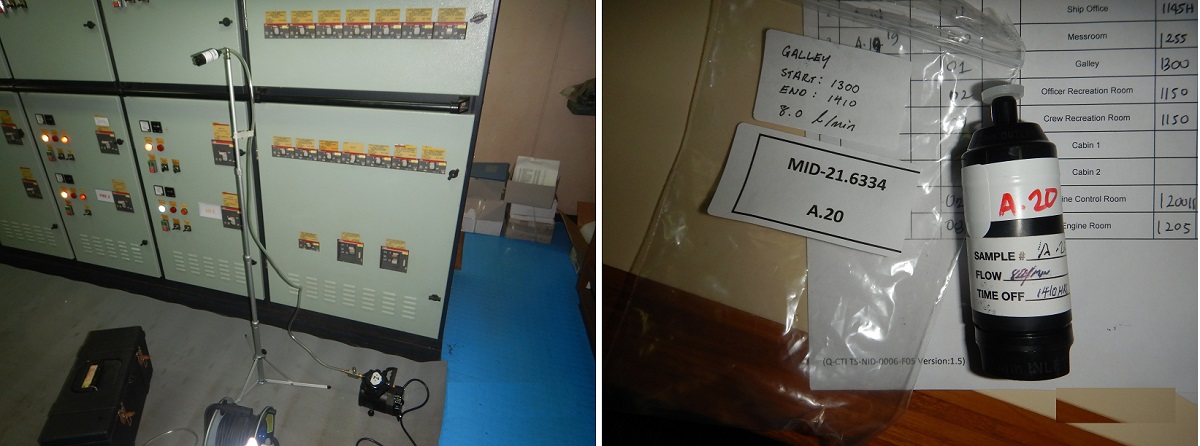Services
Related Pages
Airborne Asbestos Sampling and Analysis

Background to airborne asbestos sampling & testing
If you are thinking about commissioning a company to undertake some airborne asbestos testing, then here is some useful information you should know before issuing that order.
Health risks from asbestos arise when asbestos fibres are released into the air and inhaled. The more asbestos fibres inhaled, the greater the risk to health. Asbestos air sampling and testing is a direct way to assess the risk of asbestos being released into occupational settings both for regular Health & Safety Executive (HSE) management purposes and during any asbestos removal processes to verify that asbestos is no longer present in the air.
When asbestos is detected, air sampling and testing is used as one tool to help provide a more complete assessment of the ambient conditions. These sampling and testing methods are frequently advised within both international and national asbestos management regulations, such as MSC.1-Circ.1045 Guidelines for maintenance and monitoring of on-board materials containing asbestos or the UK’s Control of Asbestos Regulations 2012.
During the removal process, air sampling and testing is an important way to verify if and when the removal area meets the required standards for the resumption of occupational activities.
Most of the regulations concerning airborne asbestos, require that laboratories undertaking airborne asbestos analysis meet the required standards set out under ISO 17025, titled “General requirements for the competence of testing and calibration laboratories".
Types of airborne asbestos sampling tests are there?
We offer four types of testing and sampling strategies which can be used to detect asbestos presence in the air. Each of these tests require specific types of equipment in order to produce the correct results based on the situation:
- Asbestos reassurance air testing & monitoring
This form of air sampling and testing may be conducted in certain circumstances to confirm that the residual asbestos fibre concentrations from an asbestos related task are <0.01 f/ml concentrations following their disturbance. For example, after the removal of an enclosure and reoccupation of asbestos on board a vessel.
- Asbestos background air testing & monitoring
This form of air sampling and testing is generally conducted when you require evidence or a check that fibre levels in the air are below the recommended level. This is usually carried when you have minor remedial works undertaken or when accidental damage has occurred to asbestos materials within your property. It can also be used as part of an overall monitoring strategy to manage asbestos-related risks.
- Personal Air Sampling and Testing
This form of air sampling and testing is used in order to evaluate asbestos exposure to your employees during the ACM removal. It can be used in the following circumstances:
- To check the effectiveness of control measures, i.e. that engineering controls are working as they should, to their design specification and do not need maintenance or repair;
- To determine whether the action level is likely to be exceeded so that you can select the appropriate RPE to be used;
- To confirm that the RPE in use is capable of providing the appropriate degree of protection and will provide you with the correct level of protection;
- Provide information in relation to asbestos exposure for your medical surveillance records;
- Provide important risk assessment details to support your current and future asbestos works.
- Asbestos leakage air testing & monitoring
This form of air sampling and testing is used to measure the airborne fibre concentration outside a live asbestos removal enclosure at your premises in order to determine whether the integrity of the enclosure is being maintained and that that control measures are adequate. Leakage air testing is used to support an initial smoke test and the frequent thorough visual inspections of an enclosure during removal work.
Get in touch
If you have any questions or comments please don't hesitate to contact us
Services
Fuel Testing Solutions Water Compliance Services IHM & Recycling Asbestos Management Solutions NDT&UTMContact Us
192 Pandan Loop,
#05-27 Pantech Business Hub,
Singapore 128381
T +65 6271 8622